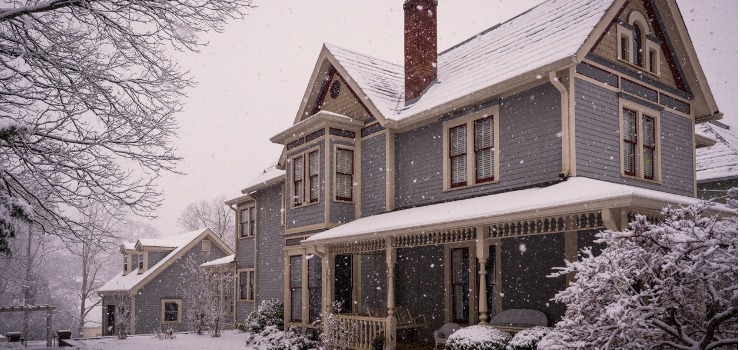
Why Heating Cost More Than Cooling?
Analysis has shown it takes four times more energy to heat homes in the U.S. than it does to cool them. In some areas of the country that can seem like an outlandish statistic. People in Texas that experience off the charts heat for about four months of the year cringe at the cost of air conditioning.
Another confounding factor is that more heating systems are powered directly by natural gas, which is very cheap these days. Approximately 49% of heating systems use natural gas and 34% use electricity. But virtually all air conditioning systems are electric, an energy source that costs considerably more money. Over a third of the nation’s electricity is generated by natural gas. During the process, there’s a significant amount of waste as the gas is converted to electricity, which is part of the reason why electricity costs more.
Despite air conditioning systems using more electricity, there are a few reasons why heating a home can cost more than cooling it, even if you use a natural gas system instead of an electric one.
Temperature Differences is the Determining Factor
There’s a simple explanation for why heating ultimately costs more than cooling, and that reason is temperature differences. Most people keep it around 75 degrees Fahrenheit in their homes. During the summer, temperatures in many areas of the country peak around 95 degrees. That’s a 20-degree difference. But even in relatively temperate areas, the winter temps can regularly get done to 45 degrees. That’s a 30-degree difference.
The larger the temperature difference is between the outside and the inside, the more energy is needed to provide climate control. This is why heating a home typically costs more.
Let’s look at two examples:
Austin, TX
Average Temperature in January – 61° high / 41° low
Average Temperature in July – 96° high / 74° low
Minneapolis, MN
Average Temperature in January – 22° high / 6° low
Average Temperature in July – 82° high / 64° low
These are extremes; one city gets very hot in the summer and the other gets very cold in the winter. But it illustrates the point above perfectly. The temperature difference in the winter in Austin is 14-34 degrees and in the summer it’s 1-21 degrees. In Minneapolis, the temperature difference is 53-69 degrees in the winter and 0-7 degrees in the summer. It’s possible in Minneapolis to go without air conditioning altogether. The same holds true for other areas up north and parts of southern California. However, most regions need heat for at least part of the winter.
While heating a home still costs more than cooling, the gap is closing. By and large, winters have become milder in the northern states while areas in the south have had record high temperatures summer after summer. The National Oceanic and Atmospheric Administration (NOAA) recently released a report that showed summer 2019 was the hottest on record in the Northern Hemisphere.
If the trend continues the cost of heating homes will go down while the cost to cool homes will increasingly climb.
The Second Factor That Makes Heating More Expensive
Heating a home is more energy-intensive than cooling because of how the home is heated and cooled. Cooling a home involves moving the excess heat out so that it’s cooler inside. But heating requires heat energy to warm the air. For 34% of households that use an electrical heating system that is a very energy-intensive process because electrical energy has to be turned into heat energy.
Moving heat requires a lot less energy than making it, which is why cooling ends up being less expensive than heating. The exception to this rule is electric heat pumps. They operate in a way that’s very similar to an air conditioner but in reverse.
With the exception of heat pumps, air conditioners have outpaced heating systems in terms of improved energy efficiency. An example of this is variable speed air conditioners that use up to 30% less energy. Even though AC use is increasing, it’s not enough to balance out the amount of energy needed for heating.
No matter what type of energy source you use to heat and cool your home, Spark Energy has a plan for you! We’re located in markets across the country offering a variety of fixed-rate gas and electric plans with exceptional customer service. Find an energy plan that’s perfect for your heating and cooling needs today!



